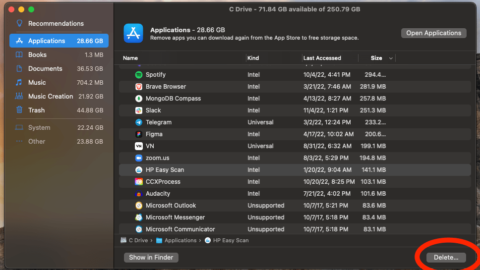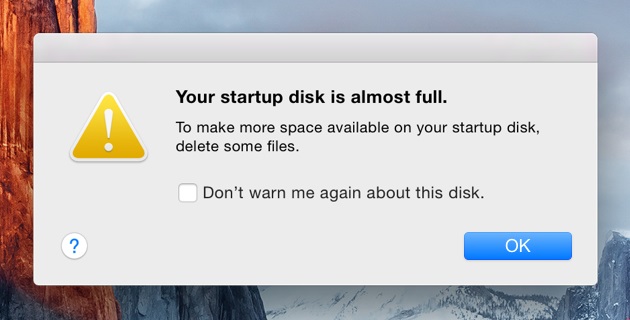

You will see files marked as Documents, Pictures, and Videos.

As you can see, your Mac gives you a full breakdown of your storage capacity and which files are taking up the most space. To fully view your storage usage, select the tab marked Storage from the options along the top. Step 2: Click on Storage Locating the Storage tab. Most importantly, this area gives you a detailed peek into your disk usage. Select About This Mac from the options under the Apple Icon along the top of your Mac’s screen. This will open a window displaying all of the information about your Mac, such as model year, processor, RAM, and graphics. Step 1: Select About This Mac Selecting About This Mac. Checking your startup disk usage is a straightforward process and only takes a few seconds. A MacBook with a 128 GB drive will run low on space faster than a system with a larger drive, like 512 GB or 1 TB. The first step to fixing the “startup disk almost full” issue on Mac is determining how much space you have at your disposal. However, if your startup disk fills up, macOS won’t be able to perform its primary functions, leaving your Mac in a potentially problematic state. Temp files, cache files, and system files expand as the system requires. Under normal conditions, your operating system writes and deletes files on your drive as it needs to. However, smooth system performance relies on your startup disk.Ĭritical operating software resides on your startup disk and accounts for all the primary functions of your computer. If you need to store vast amounts of files, you can always turn to a cloud storage service like Google Drive or DropBox, or even use an external backup device like a USB flash drive or external hard drive.


As a result, your primary startup disk represents all of your Mac’s internal storage. While some Macs offer upgradeable storage drives, many do not. Depending on your startup disk’s capacity, you might wind up in the unfortunate position of running out of space before long. Your pictures, documents, music, and other projects also call the startup disk home. This drive is where your operating system and all of your software live. The startup disk is a vital component of your Mac. So how can you get some much-needed space on your startup disk? In today’s article, we’ll dive deep into why the “startup disk almost full” issue occurs and some potential remedies we can use to fix it. Having enough space on your startup disk is crucial to your Mac’s functionality. One day, you’re using your Mac like normal when suddenly you get the dreaded error message saying, “your startup disk is almost full.” This might come with a host of other issues like slow performance, glitchy applications, failed downloads, and the inability to install updates.


 0 kommentar(er)
0 kommentar(er)
